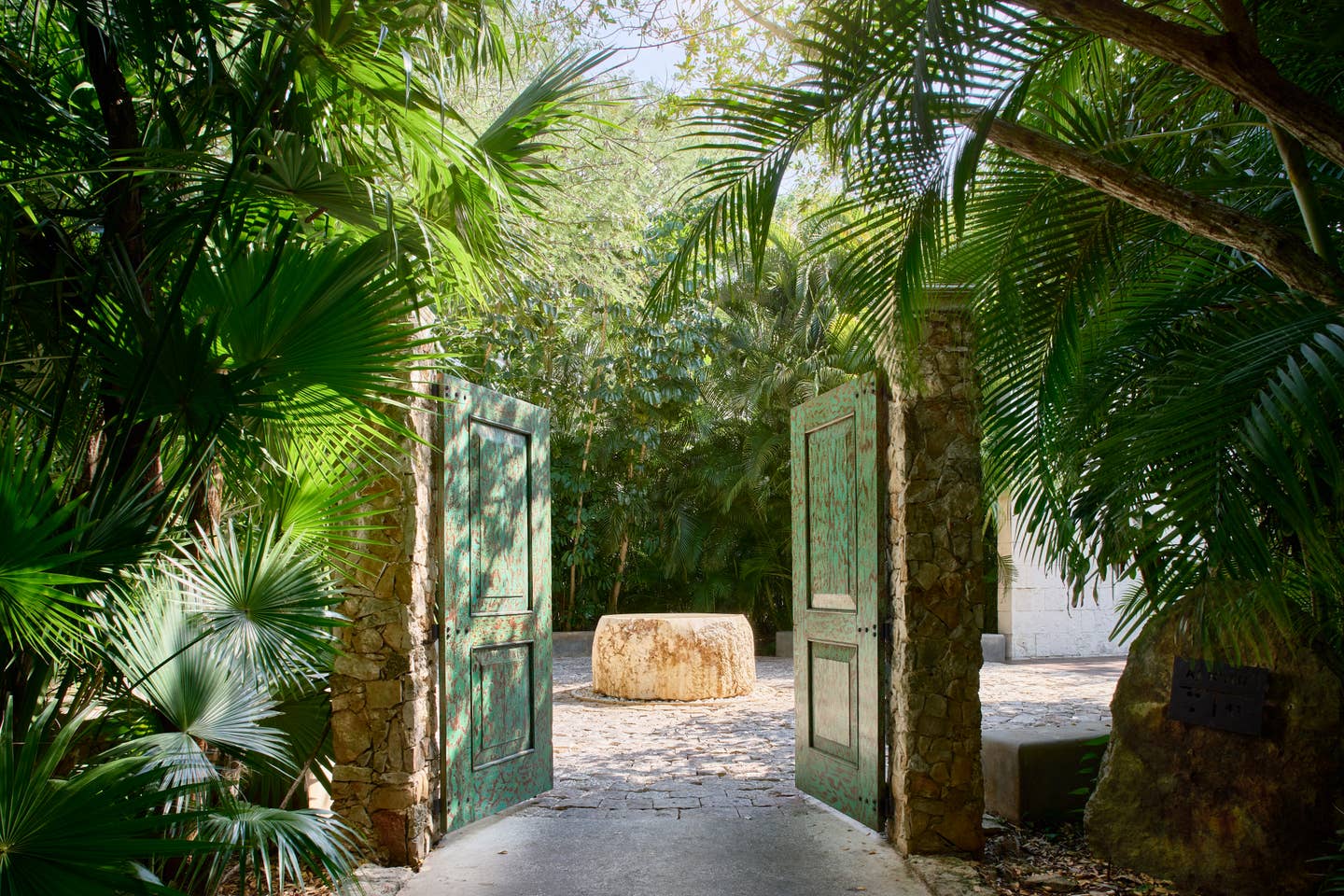Into the Wild at Habitas Bacalar
Surrounded by swooping palms and slow burning copal in the Yucatan Jungle, I felt instantly embraced by Habitas Bacalar. Before I was led to my room, I was welcomed into a copal ceremony. While the tree resin burned, Habitas staff told stories of copal being used for thousands of years to clear land and spirit of negative energy. From the shamanic breath work to the use of tamarind from the ancient trees that first lined the property when they began its construction, every choice is deeply intentional. The hotel honors tradition and weaves ancient practices into every guest activity from the moment I arrived.
Surrounded by swooping palms and slow burning copal in the Yucatan Jungle, I felt instantly embraced by Habitas Bacalar. While the tree resin burned, Habitas staff told stories of copal being used for thousands of years to clear land and spirit of negative energy.
From the shamanic breath work to the use of tamarind from the ancient trees that first lined the property when they began its construction, every choice is deeply intentional. The hotel honors tradition and weaves ancient practices into every guest activity from the moment I arrived.
A paradise 4 hours south of Cancun by car, or 30 minutes from the small airport of Chetumal, it’s nestled on an ancient and beautiful lagoon. The resort is home to 34 beautiful tent suites, the Playita Deck overlooking the crystal blue water, a perfectly delicious restaurant called Siete, their Wellness Shala, a few bars, and a spa. At first glance, Bacalar is the ultimate destination to unplug and reconnect with yourself.
During my trip, I had my pick of itineraries that offered meditation, yoga, breath work and a 12-hour roasted cochinita pibil that might just change your life (it definitely changed mine).
The person behind this magical bite was Chef Roberto Garduño, a Mexico City born chef who returned from New York City’s ABC Cocina to bring his own culinary vision to Bacalar. Raised in Cuernavaca, Garduño was initially attracted to the rebellious nature of the cooking world. Cooking meant freedom and autonomy as a young child and, as his obsession with food began, so did his career.
After studying Restaurant Administration at CESA in Mexico City, Garduño made his way to New York City where he worked across a multitude of cuisines and global inspirations. At ABC Cocina, he trained under Michelin-starred chef Jean-Georges Vongerichten and proceeded to expand his flavor palate at the beloved Uncle Boons Thai and Guadalupe Inn.
Inspired by his work at Uncle Boons, Roberto began to mix his Mexican roots with Thai influence in his cooking.
“When it comes to my palate, [Southeast Asian flavors] hit the things that I love the most, similar to Mexican cuisine—the combination of acidity from the limes, bold flavors, chilis, cilantro, and a balance of salt or fish sauce.”
At Habitas Bacalar, Garduño experiments with ingredients like coconut milk, fish and oyster sauce, soy, and Thai curries. A perfect representation of his blend between Thai and Mexican flavors is Chef Garduño’s tiradito, a thinly-sliced catch-of-the day served in a tamarind & soy dressing, burnt habanero, banana aioli, puffed rice, and cilantro. The soy from the Thai inspiration marries with tamarind, a flavor Garduño honors often due to its history at the Habitas property.
Chef Garduño also makes sure he only sources produce and livestock from the surrounding farmers in an effort to create as little a carbon footprint as possible.
“I like calling our kitchen ‘cocina de product,’ Garduno says. “Because the only rule is that we must use local products. With our personal cooking styles, though, there are no rules.”
He takes great pride in his relationships with the Bacalar community and highlights ancient culinary practices.
“The farmers are the real rock stars behind the food, ” he said.
Working with native plants like taro root, tamarind, achiote, passion fruit and wild herbs, every dish I tasted told the story of Bacalar.
As for the spectacular cochinita pibil, it is a favorite and celebratory pork dish made across all of Mexico and Garduño made sure to honor it properly. Working with a local family, he used an animal native to the area that is a cross between a pig and a boar. As in ancient tradition, the kitchen cooked the pig in its entirety, wrapped in banana leaves and roasted for 12 hours.
As he said, “With this dish, there are two main ingredients: the pork and the pineapple. The pineapple cooks down and blends with the butter, while the rinds are used to make tepache ( a fermented drink using pineapple rinds) so as not to waste any of the remaining fruit. The pork is served with pickled red onion with habanero, fresh cilantro, limes, and warm tortillas that are nixtamalized in lime water, also in the traditional way.”
It was a perfect combination of rich, earthy slow-roasted pork and sweet/tart pineapple—a dish I will never forget.
With a deeply intentional culinary program, the rest of the property reflects this same message. I attended multiple wonderful classes such as yoga and meditation but the breath work class stood out to me the most. Led by a local shaman, the class was enshrouded in a cloud of ritual copal smoke and led us through an incredibly spiritual journey, as emotionally moving as it was mentally challenging.
With the programming and layout of the grounds, guests are encouraged to slow down and be present with themselves at every turn. These touches separate Habitas from other eco-resorts I’ve visited—there’s a deliberate attempt to invite guests into the heritage of Bacalar and its culture. This gesture not only widened my knowledge but made me feel instantly a part of a greater family. I returned back to L.A. with an appreciation for the significance of copal, an awe of the ancient salt lagoon, and a new desire to educate myself about other communities in Mexico.





